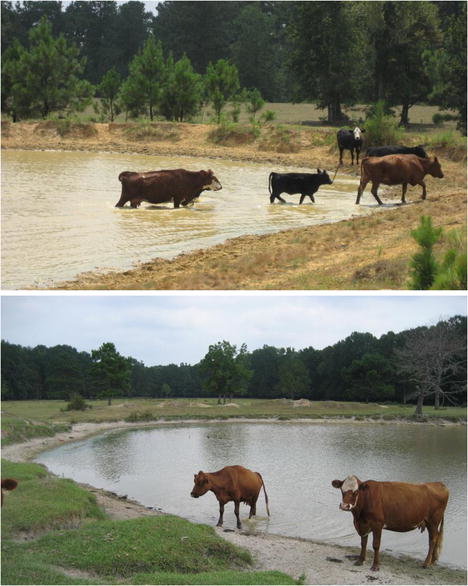Keyword: Turbidity

Wilson, A. E., M. F. Chislock, Z. Yang, M. U.G. Barros, and J. F. Roberts. 2018. Pond bank access as an approach for managing toxic cyanobacteria in beef cattle pasture drinking water ponds. Environmental Monitoring and Assessment 190:247.
Abstract
Forty-one livestock drinking water ponds in Alabama beef cattle pastures during were surveyed during the late summer to generally understand water quality patterns in these important water resources. Since livestock drinking water ponds are prone to excess nutrients that typically lead to eutrophication, which can promote blooms of toxigenic phytoplankton such as cyanobacteria, we also assessed the threat of exposure to the hepatotoxin, microcystin. Eighty percent of the ponds studied contained measurable microcystin, while three of these ponds had concentrations above human drinking water thresholds set by the US Environmental Protection Agency (i.e., 0.3 μg/L). Water quality patterns in the livestock drinking water ponds contrasted sharply with patterns typically observed for temperate freshwater lakes and reservoirs. Namely, we found several non-linear relationships between phytoplankton abundance (measured as chlorophyll) and nutrients or total suspended solids. Livestock had direct access to all the study ponds. Consequently, the proportion of inorganic suspended solids (e.g., sediment) increased with higher concentrations of total suspended solids, which underlies these patterns. Unimodal relationships were also observed between microcystin and phytoplankton abundance or nutrients. Euglenoids were abundant in the four ponds with chlorophyll concentrations > 250 μg/L (and dominated three of these ponds), which could explain why ponds with high chlorophyll concentrations would have low microcystin concentrations. Based on observations made during sampling events and available water quality data, livestock-mediated bioturbation is causing elevated total suspended solids that lead to reduced phytoplankton abundance and microcystin despite high concentrations of nutrients, such as phosphorus and nitrogen. Thus, livestock could be used to manage algal blooms, including toxic secondary metabolites, in their drinking water ponds by allowing them to walk in the ponds to increase turbidity.